ADDING-SUBTRACTING-FRACTIONS
REVIEW OF ADDING &
SUBTRACTING FRACTIONS

You cannot add or subtract fractions unless they have a
common denominator.
The LEAST COMMON DENOMINATOR is the smallest number that contains
all the prime factors of both numbers.
1) Write the prime factorization of each denominator.

2) Circle all the prime factors of the first denominator.

Go to the next denominator’s prime factorization and
scratch out factors that are
in the first denominator. Then circle all the prime factors of the second
denominator that DON ’T appear in the first denominator's prime factors.
Notice that 21 = 3·7, which has a 3 in the prime factorization. The second
denominator is 18 = 2 ·3 ·3, which has two 3’s. One 3 already appeared in
the prime factorization of 21.
The LCD is the circled factors. LCD = 3·7·2 3=126
3) Rewrite each fraction into an equivalent fraction with
the LCD as the
denominator.

4) Now perform the subtraction by subtracting the
numerators and leaving
the denominator the same.

Example
Subtract:

Are the denominators, y and 18, the same?
Then, find the LCD of y and 18.
But we don’t know what y is, so how could we know if it goes into
18?
When you have denominators where one is a variable term and the
other is a constant term, find the Least Common Multiple of the
coefficient and the constant , and then find the Least Common
Multiple of the variables.
The coefficient of y is 1. The other denominator is just 18.
What is the LCM of 1 and 18?
Remember, LCM means what’s the smallest number that both 1 and
18 will go into?
LCM = 18 ____
However, the Least Common Denominator will have to include the
the LCM of the variables. Since the other denominator doesn’t have
a variable, the LCD of the variables is just y.
So the LCD is 18y_
Now rewrite each fraction so that the denominator is ____

The new expression which now has like terms is:
Example
Subtract:

Are the denominators, 3y and 6y2, the same?
Then, find the LCD of 3y and 6y2.
The coefficient of 3y is 3. The coefficient of 6y2 is 6.
What is the LCM of 3 and 6?
Remember, LCM means what’s the smallest number that both 3 and
6 will go into?
LCM = __6__
However, the Least Common Denominator will have to include the
the LCM of the variables. What’s the LCM of y and y2? _y2
So the LCD is _6y2____
Now rewrite each fraction so that the denominator is ____
The new expression which now has like terms is:

Add :

Factor each denominator before finding the LCD.
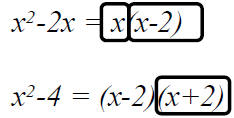
Like doing prime factorization, we circle the factors in
the
first denominator, and then circle the factors in the second
denominator that are NOT in the first denominator.
LCD = x(x-2)(x+2)
Now change each fraction to have the LCD for its
denominator.
Add :
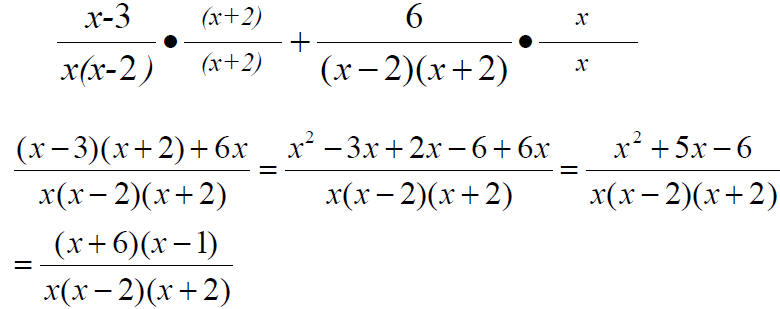
Subtract:

Before trying to find an LCD, notice that 3 - x = -(x - 3)
So the expression can be rewritten as:
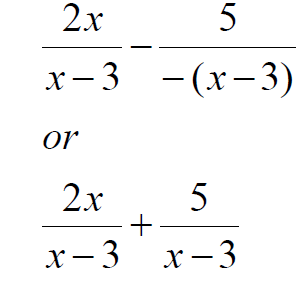
REMEMBER, when additing fractions, once you have a least
common denominator, you ONLY add the numerators and you
leave the denominator the same.
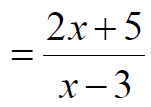
COMPLEX FRACTIONS are just fractions inside fractions.
They are easily simplified by just multiplying the numerator and
denominator of the “main” fraction by the LCD of all the
fractions.
Example 1:
Simplify :
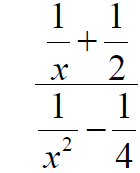
The denominators in this complex fraction are: x, 2, x2 and 4.
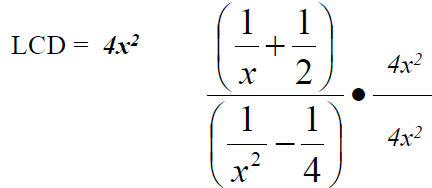

Yeah! No more complex fractions!
Now factor this rational expression in order to
cancel common factors and reduce it .
| Prev | Next |